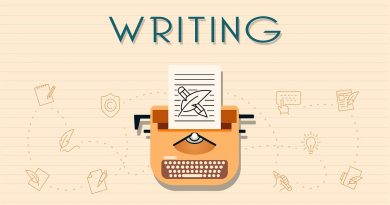The Impact of Artificial Intelligence on Various Industries
Artificial Intelligence (AI) is reshaping the world like never seen before, improving efficiency, and driving innovation in many industries… creating new business as well. AI is disrupting every sector be it healthcare, agriculture finance, or manufacturing. In this article, we explore the large-scale level that AI brings into various fields – both in terms of change and as a threat.
1. Healthcare
The healthcare industry is where AI has made a big impact, helping to predict all kinds of diseases and refine treatment based on analysis. Using AI algorithms, huge medical data can be analyzed by which timely diagnosis of diseases and personalized treatment plans are possible. Machine learning models, for instance, can better measure patterns in medical images (like X-rays and MRIs) than human specialists resulting in more precise diagnosis at high speed.
In addition, AI-driven robotic systems are executing intricate surgeries accurately while also shortening recovery periods and avoiding any vital human errors. In addition, AI is transforming the drug discovery process by providing insight into molecular behavior to speed up medication development. Like with any such progress, policymakers have a long road ahead of them while integrating AI within healthcare as data privacy remains the centerfold of all ethical challenges on public policy and needs strict regulatory frameworks.
2. Agriculture
AI in agriculture is leading an era of precision farming. Artificial intelligence (AI)–based systems perform crop health analysis, soil condition assessment, and weather forecasting by analyzing satellite imagery data. This allows farmers to efficiently manage water usage without wasting a single drop, and instead use it in the right place at exactly the needed amount while minimizing fertilizer, pesticide & agrochemical dissemination thus increasing food outputs without direct harm to nature.
AI is even starting to be weaved into farming machinery like tractors to perform the more automated tasks of working on a farm. An automated tractor with built-in AI, for example, can navigate through field terrain without a human operator and plant crops or bring in harvests all by themselves – this is an advantage as it involves little to no manpower of its own. As a result, the use of AI in agriculture is helping to increase productivity and conduct sustainable farming.
3. Finance
The finance industry is using AI to improve customer service, risk management, and operations. The functionality of an AI-powered chatbot is competently able to provide a personal touch, ensuring real-time interaction for promotional or customer support queries. Fraud detection, credit scoring, and investment recommendations are just some of the few things that machine learning algorithms analyze over a sea of financial data.
In addition, AI trading systems automatically maintain rapid trade execution and also capture opportunities that human traders may not see in some future market conditions. Hence these factors have led to Algorithmic Trading dominating the financial marketplace by tightening Governance regulations from various legislative bodies of regulatory jurisdictions on a global scale. However, the use of AI in finance is not without its own set of problems – it can be subject to market manipulation and necessitates strong cyber defenses.
4. Manufacturing
Smart factoring and predictive maintenance can be realized with the help of AI A Revuellotionary Step In The Manufacturing Establishment: Andutility Of AI In smart factories, AI models are implemented in robots and machines which interact with each other to increase production efficiency while reducing downtime as well delivering better quality output. A Predictive maintenance system that takes in data from sensors on machinery to predict when the machine is likely to fail and schedule the maintenance right before a breakdown happens, they use AI as well.
This both increases the life span of equipment and avoids downtime due to production, as well as keeps maintenance costs low. Generative design algorithms take user-specified constraints into account and then begin to create new designs using AI so that users can rapidly prototype a product. Admittedly, the common use of AI in manufacturing has sparked fears that people will lose their jobs and need to be retrained.
5. Retail
For retail, AI is being used to improve user experience with personalized recommendations and better management of inventory. E-commerce platforms – AI creates customer behavior analytics and preference analysis leading to product recommendations, and sales increase in addition to driving better user experience. AI chatbots help customers find, order, and troubleshoot products in real time for a super-interconnected shopping experience.
It is also optimizing inventory management in terms of demand prediction, stock levels to contain wastage and ex-stock availability through replenishment with the scheduling being done by AI. AI-powered cameras and sensors are used in physical stores to monitor customer movements and preferences, allowing retailers a better understanding of how they could optimize store layout to improve the shopping experience overall. This does, however, come with privacy implications the fact that it requires retailers to collect and analyze large amounts of customer data.
6. Transportation
Autonomous vehicles are the best example of putting AI into action, making a revolution in transportation. Autonomous vehicles, powered by AI solutions, ingest streaming video and data from cameras, sensors, and GPS to map out paths in real-time while analyzing cascading decisions on the fly so as not to crash or get lost. The technology holds the potential to lower car crashes, fight urban congestion, and provide mobility for those who cannot drive.
AI also automates route optimization, demand prediction, and warehouse operations improving logistics and supply chain management. AI-enabled drones and robots can improve the accuracy, and efficiency of deliveries/help manage warehouse inventories for drastically lower delivery times. While such use cases can have tremendous benefits, the potential for automated AI in transportation to be applied raises regulatory and ethically minced questions (e.g. counterbalancing who is responsible if safety is breached, or when it begins replacing jobs like those on delivery side trucks).
7. Education
AI is transforming personalized learning and administrative effectiveness in the education industry. Educational platforms powered by AI can look into the learning patterns of students and adjust content accordingly so that it fits their unique requirements making education results more effective. With the use of virtual tutors, chatbots that deliver instant feedback and support for coursework can assist students in their studies outside of class.
AI is also automating administrative duties like grading and enrollment management, freeing educators to teach more and engage with students. In addition, AI-driven analytics offers a way for educators to understand how effectively their students are succeeding in engaging with the material and allows them data-driven decisions to increase learning experience quality. But there are concerns about AI in the classroom, including data privacy, fairness, and the importance of ensuring that we use technology to supplement – not replace – humans as educators.
8. Energy
AI is used to make the most out of efficient generation, distribution, and consumption in all-energy technology intersections. Demand prediction and electricity balance with intelligent predictive models trained on smart grid data by using AI algorithms. it is improving the sustainability and maintenance of renewable energy sources such as wind and solar, by predicting weather patterns (wind & sunlight shining on panels) AI can optimize how much to store in batteries for when it’s stormy outside or point where there is no sunlight).
Artificial intelligence systems are being implemented in the monitoring and upkeep of energy infrastructure, where they detect faults to predict equipment failures before outages. In addition, AI makes possible the advent of smart buildings and homes that improve energy efficiency through occupancy detection and usage patterns to consume electricity as necessary without any wastage or unnecessary costs. The use of AI in the energy space supports sustainability and efficiency but also requires dealing with cyber-security challenges including ensuring that our power systems are resilient.
Conclusion
Now we have already seen the power of AI transforming different industries, creating innovation and efficiency with endless possibilities. From healthcare, agriculture, and finance to manufacturing – AI is changing everything we know about how things work. But AI faces challenges of its own, things like ethical implications and job displacement; these problems coupled with the issues that arise when creating robust regulations for self-regulating entities may slow down adoption. In moving into an AI-powered future, we must hold with us the belief that while the golden age of innovation is in front of us; it should not come at too high a price and if applied correctly will benefit mankind everywhere so generating a global society built on sustainable development and social justice.



